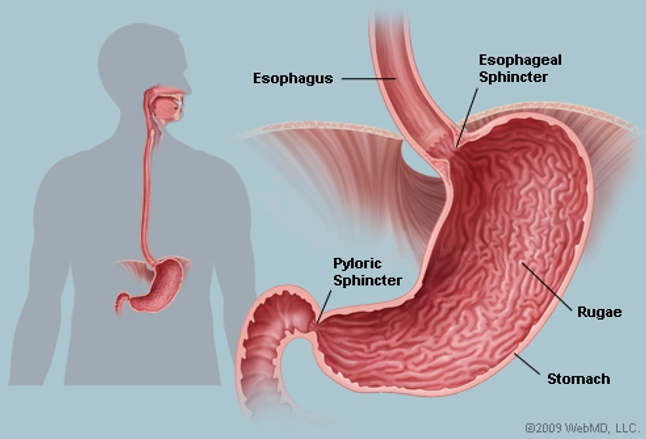DECE2-Solution(ENGLISH)-IGNOU-DAY 6-ORSP


DECE2-Solution(ENGLISH)-IGNOU-DAY 6-ORSP
Welcome To
Odisha Regional Study Point
We Allows the best competitive exam preparation for SSC,BANKING, RAILWAY &Other State Exam(CT,BE.d)…etc
In ଓଡ଼ିଆ Language…
Why opt ORSP?
✅Daily Free Live class
✅Daily Free practice Quiz
✅FREE Live Tests Quiz
✅Performance Analysis
✅All Govt Exams are Covered
DECE2-Solution(ENGLISH)-IGNOU-DAY 6-ORSP
Q1. Describe the processes of digestion, absorption and utilization of food.(10 MARK)
Ans. Digestion of Food: Let us now take a look at the overall process of how
digestion occurs. Digestion takes place step-by-step at various sites in the digestive
tract as you will learn from the following discussion,
Mouth: As you have already noticed, the process of digestion begins in the mouth
where food is chewed by the teeth and mixed with saliva. While the food is still in
the mouth, it is acted upon by an enzyme, which acts only on cooked carbohydrates
such as starch and partially digests them or breaks them up into smaller units.

Stomach: The chewed food mixed with saliva then passes into the stomach through
the tube-like structure called the esophagus. Here it gets mixed with the digestive
juice present in the stomach called gastric juice which is acidic in nature. Mixing of
food with the gastric juice converts the food into a thin soup-like consistency. Gastric
juice contains an enzyme which acts on proteins and brings about their partial
digestion. Other nutrients in food remain chemically unchanged.

Small intestine: The next stop in the digestive tract is the small intestine. The
partially digested mass of food passes from the stomach into the small intestine. The
small intestine not only contains intestinal juice (which is secreted from the small
intestine itself) but also secretions from the liver and pancreas. The secretion from
the liver is called bile and from the pancreas is known as pancreatic juice. Bile aids in
the digestion and absorption of fats (you will learn about the role of bile in fat
digestion in the next Unit). Both pancreatic and intestinal juices contain enzymes
which break down fats, proteins and carbohydrates into simpler substances. These
simple substances ultimately reach the bloodstream.

Large intestine: The components of food which are not absorbed in the small
intestine along with a large amount of water passes on to the large intestine. Here,
most of the excess water is reabsorbed and the remaining water and solid matter is
eliminated from the body as fasces,

Absorption of Food: Where is food absorbed? You would have realized by now that
absorption takes place in the small intestine. The end products of digestion or the
nutrients present in the small intestine can be used by the body only when they enter
the bloodstream. This process of movement of digested food or nutrients across the
intestinal wall to the bloodstream is termed absorption of food. The wall of the small
intestine is made up of numerous folds or finger-like projections known as villi. The
presence of these villi tremendously increase the total area from which absorption
can take place. Most of the nutrients are absorbed from the upper part of the small
intestine though some are absorbed from the lower portion

As you know, the end products of digestion move into the bloodstream. The blood
circulating in the body and therefore, the nutrients it carries reaches every cell of the
body. Once they reach the cell, the nutrients perform their specific functions.
Utilization of Food: How is food utilized? In order to be utilized for specific
functions the absorbed end products or the nutrients from the food we eat further
undergo chemical changes. They are either further broken down to release energy or
are used to -form more complex substances. We use a certain term to refer to these
processes. Let us learn this term.
Metabolism is a general term. It refers to all the chemical changes that take place in
the cells after the end products of digestion are absorbed. You know it is of two
types breakdown of complex substances into simpler ones and manufacture of
complex substances from simple ones.
WATCH VIDEO-DECE2-Solution(ENGLISH)-IGNOU-DAY 6-ORSP
Child Health And Nutrition(DECE2) IGNOU Unit Wise Solution Day 5(ENGLISH)
DECE2-Solution(ENGLISH)-IGNOU-DAY 5-ORSP
Welcome To
Odisha Regional Study Point
We Allows the best competitive exam preparation for SSC,BANKING, RAILWAY &Other State Exam(CT,BE.d)…etc
In ଓଡ଼ିଆ Language…
Why opt ORSP?
✅Daily Free Live class
✅Daily Free practice Quiz
✅FREE Live Tests Quiz
✅Performance Analysis
✅All Govt Exams are Covered
DECE2-Solution(ENGLISH)-IGNOU-DAY 5-ORSP
❓LIVE CLASS SCHEDULE❓
🔍 EVERY DAY🔎
6.00 AM- Current Affairs Live
2.00 PM- Resoning Live
2.50 PM- GS/GA Live
8.00 PM – ENGLISH LIVE
8.30 PM – Math Live
9.15 PM- Topper Announcement
9.30 PM- DECE PYP Live
Sunday-English+Odia Live+Teaching Aptitute
DECE2-Solution(ENGLISH)-IGNOU-DAY 5-ORSP

TELIGRAM LINK- https://t.me/ORSP_OFFICIAL
Subscribe Our YouTube Channel – https://www.youtube.com/c/ODISHAREGIONALSTUDYPOINT
App Download Link-
DOWNLOAD FROM GOOGLE PLAY STORE
WATCH Our STUDY PLAN Video for Kick Start your Competitive Exam Prep.
✏️✒️📚📖✅✅✅
ORSP Daily74M Quiz App(Earn Money by Answering Daily Quiz(Current Affairs+Math+Reasoning+GS+GA)-(WATCH VIDEO)
Join With us As per Schedule
And
Happy Learning…
Thank You
ORSP
(9502052059)

7 thoughts on “DECE2-Solution(ENGLISH)-IGNOU-DAY 6-ORSP”